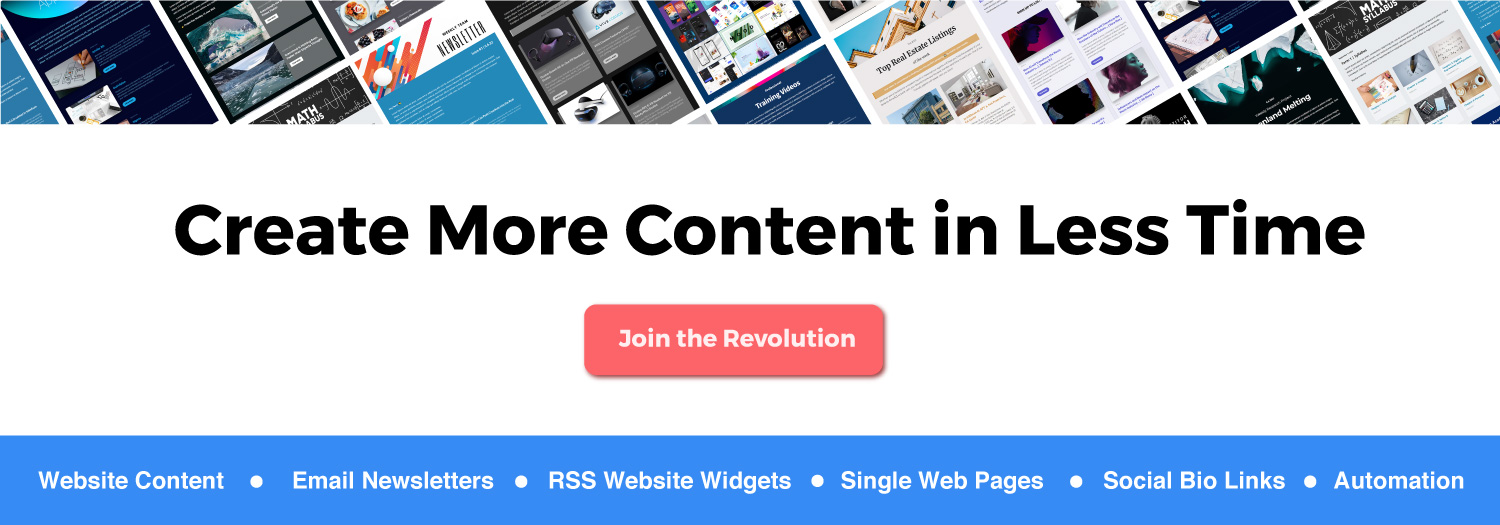No matter how impressive your product is, if you can’t communicate effectively with your customers, you won’t be able to turn potential leads into sales.
This holds true particularly in the modern era of information overload and competition. Nowadays, there are so many brands that are trying to grab the attention of readers, that it can be tough to stand out.
Understanding the right ways to communicate with your target audience is an essential step in convincing them to buy your product.
Your marketing methods should aim to build a relationship with customers and offer them value along the way. Hence, the channels you use to interact with them are of paramount importance.
This blog talks about the meaning of marketing channels, their importance, and the most important marketing channels that businesses should focus on! Ready? Lets go!
What is a Marketing Channel?

A marketing channel is essentially any platform or mode of communication that can be used to market a product or service to potential customers. It refers to the various touchpoints that form the basis of communication between the company and its target audience.
Before we head into the different types of marketing channels, it is essential to understand the benefits that marketing channels give to your business.
Why Are Marketing Channels Important?
1. Creating Brand Awareness:
The main goal of marketing channels is to show your presence to potential customers. Whether it is through social media, emails, or any other marketing channel, the first thing they accomplish is establishing that initial point of contact with new customers.
Most of the modern marketing channels are super scalable, meaning you can reach out to a large number of people at relatively low costs. With the internet, you have the potential to put yourself out there to billions of people with no geographical boundaries.
Read more: Meme Marketing: Definition, Tips & Examples!
2. Creating a Community Around your Brand:
Once the initial brand awareness has been formed, marketing channels allow people who are interested in your niche to “subscribe” in one way or another.
This could mean subscribing to your email newsletter, turning on “push notifications” on social media for every time you post, or adding your website to their bookmarks.
It also helps in creating a conversation around your brand through comments, feedback, and your subscribers talking to each other!
3. Converting Leads Into Sales:
With a consistent flow of valuable information across your marketing channels, people start understanding why your product is the best in its niche.
Marketing channels allow you to subtly market your product without being too “in the face” of potential customers. Over time, as you refer to your product in the relevant contexts, you start generating sales!
Now that you’ve understood the importance of marketing channels, let’s take a dive into the marketing channels your business should make use of!
List Of The Marketing Channels You Need to Use!
There are numerous amounts of marketing channels and most businesses don’t have the time and financial capabilities to be present in all of them. Hence, this list talks about the most important ones that your business should definitely look into!
1. Email Marketing:

Email marketing is one of the most efficient marketing channels when it comes to Return on Investment, generating an average of $42 for every $1 spent. It involves sending commercial email messages to those who have “subscribed” to your emails.
In 2019, there were 3.9 billion email users over the world, and this number is only expected to grow. The primary goal of email marketing should be to provide value with engaging content and information and subtly promoting your product or service along with it.
Creating email newsletters used to be a tedious process, but with amazing new tools like elink.io, it has never been easier. elink is the easiest way to deliver engaging content from around the web right to your newsletter subscribers.
Elink.io is an online tool that allows you to create stunning newsletters by just adding links. You can either start from scratch or choose between templates to create customized email newsletters in a matter of minutes.
2. Social Media Marketing:
Social media is one of the most promising marketing channels as it can lead to your product or service going viral in a matter of weeks. In 2017, 2.86 billion people all over the world were social media users, and it is estimated that this number is expected to touch 4.41 billion by 2025.
This highlights the growth and importance of social media, and the number of people it has the potential to reach. People use social media not only to connect with friends and people they look up to, but also to engage with their favorite businesses and products.
There are many different social media platforms out there and each one has characteristics that appeal to different types of audiences:
Facebook is the most popular social media platform, with 2.85 billion users, followed by Instagram (1 billion monthly active users). Tiktok is one of the fastest-growing platforms, with 689 million monthly users. Facebook users are from a wide range of age groups, whereas Instagram and TikTok have comparatively younger users.
Instagram and Facebook also have separate “Business Accounts” that let you gain insights into your posts. You can post interesting and engaging content that showcases your product or service, and use hashtags to reach out to potential audiences. With consistent posting and out-of-the-box content, there are decent chances for your page to go viral!
3. Content Marketing:
Content marketing refers to providing valuable information regarding the niche that your business is present in. This information can be provided on your website blog, Youtube channel, or even on your social media handles.
The main benefit that content marketing offers is that it allows you to provide valuable information first, rather than just pitching your product or service, which may come off as spammy.
When you deliver information for free (such as on your blog), you build immediate trust with the reader that can then be translated into sales. The value provided lets readers understand that you know what you’re talking about and hence they become interested in other things that you have to offer.
However, most companies may not have the time or resources to keep publishing their own content on a consistent basis. This is where a content curation tool like elink.io makes life much easier for small and medium-sized businesses!
Elink.io lets you bundle up links to your favorite content and then create a newsletter out of them or embed them on your website! You can even automate the content curation process using elink. Awesome, right?
4. Influencer Marketing:
With the rise of social media over the past decade or so, many people have attained a large following due to their prominence in certain niches.
Influencer marketing refers to a brand collaborating with these social media personalities that not only have a considerable amount of followers, but more importantly, have gained the trust of those that follow them. Hence, influencer marketing combines the idea of celebrity endorsements with modern-era digital campaigns.
The reason why influencers are so important in the new age of social media is that they have the ability to impact the purchasing decisions of their followers. This is due to the trust and relationship that has been built between them.
Many influencers are prominent in a certain niche that they actively engage in, by creating content about the topics relevant to the niche. Hence, their followers are people that are interested in the topics that the influencers talk about.
Collaborating with the influencers that are relevant to your industry automatically helps you reach out to your target audiences. Influencer marketing is also usually a one-time investment, with advertised content that stays on the influencer’s social media profiles forever!
Read more: Marketing Psychology: 9 Strategies to attract Customers!
5. Word of Mouth Marketing:

Word of Mouth Marketing is the most organic form of marketing available. If customers that have used your product or service refer it to their friends, family, and colleagues, it acts as the most trustworthy form of marketing.
A Nielsen report concluded that 92% of people trust recommendations from friends and family, over other forms of marketing.
It is important to note that the key to word-of-mouth marketing is having a great product or service in the first place If existing customers aren’t happy with what you have to offer, why would they recommend it to others?
The best part about Word-of-Mouth Marketing is that is absolutely free, and hence it acts as the most natural form of marketing. It also leads to the truest customers that genuinely believe in your business, rather than those who have been influenced by social media or advertisements.
Read more: Viral Marketing: Definition, Benefits, Techniques & Tools!
6. Affiliate Marketing:
One of the most subtle forms of marketing is affiliate marketing, wherein a company pays other people or businesses (affiliates) a commission for marketing its products. The affiliates are usually prominent people or supplementary businesses in the industry that your company operates in.
This may sound similar to influencer marketing, but there’s a major difference between the two: influencer marketing usually deals with paying a one-time fee to the influencer for advertising your product.
On the other hand, affiliates get a commission every time a person buys the product through them. To verify this, each affiliate has its own affiliate link or code, and if people buy the product using this, they get a commission.
Affiliate marketing is beneficial as it is targeted towards customers interested in the same niche. It is also a comparatively low-risk marketing channel as you don’t have to pay any initial money to the affiliates; you only give them a commission if they target customers towards you.
Moreover, since affiliates post links to your product, which effectively acts as backlinks to your website, there is a boost to the Search Engine Optimization of your website.
7. Guerrilla Marketing:
Guerrilla marketing refers to the use of unorthodox marketing strategies to attract spotlight to your company in a low-cost way. This kind of marketing strategy revolves around using unconventional techniques that surprise the consumer, causing a buzz around your brand.
The trick with guerrilla marketing is to grab the attention of viewers by doing something out of the box. There are quite a few ways this can be done. For example, Red Bull and Austrian extreme athlete Felix Baumgartner partnered together to set a world record for the highest skydiving jump. He jumped from a height of 128,100 feet, and his bodysuit was covered with Red Bull logos, allowing Red Bull to grab immediate attention and enhance its motto of “gives you wings”
This is just one example of out-of-the-box guerrilla marketing. However, as a small business, your guerrilla marketing methods don’t need to involve high costs. Make some funny videos around your brand, or capture authentic reactions of customers reacting to your product. Do something that brings a smile to people’s face, and they’ll remember you for the rest of their life.
8. Paid Marketing:
Last but not the least, paid marketing is the final marketing strategy you need to use in 2021. With so many brands fighting for attention, paying for advertisements is one of those investments you’ll have to make for your company to stand out.
You should try paying for advertising on Google, Instagram, Facebook, Youtube and Snapchat, as these are the world’s most popular social medias that allow you to reach out to billions of people. Moreover, their ad programs allow for targeted ad spending, ensuring you reach out to those potential customers that are interested in you niche.
On average, businesses make $2 for every $1 they spend on Google Ads. Their analytics feature also allows you to track the results and alter your future campaigns.
Hence, if you have a genuine product, paid marketing will help you reach out to people who may not have discovered it organically.
Conclusion
Even though there are so many marketing channels out there, these are the most important ones your business should focus on. Sorting through the cluster of inefficient marketing channels is essential for any firm.
Hence, deciding which marketing channels to use depends on where your customers interact the most. Researching about your customers and your competition will give your business the insights it needs to understand the most efficient marketing channels.
However, to reach the maximum number of people, it is important to develop an omni-channel strategy by providing a consistent customer experience across multiple channels.
So what’re you waiting for? Make your presence felt across these important marketing channels and watch your sales take off!
Further reads:
4Ps of Marketing (Marketing Mix): The Complete Guide!
Marketing Strategies to Take Your Business to the Next Level
7 Ways to Increase Newsletter Engagement Rate
11 Email Verification Tools to Check Out in 2021
15 Clever Marketing Tactics You Need To Know!
Top 17 Marketing Blogs & Websites You Need To Bookmark







